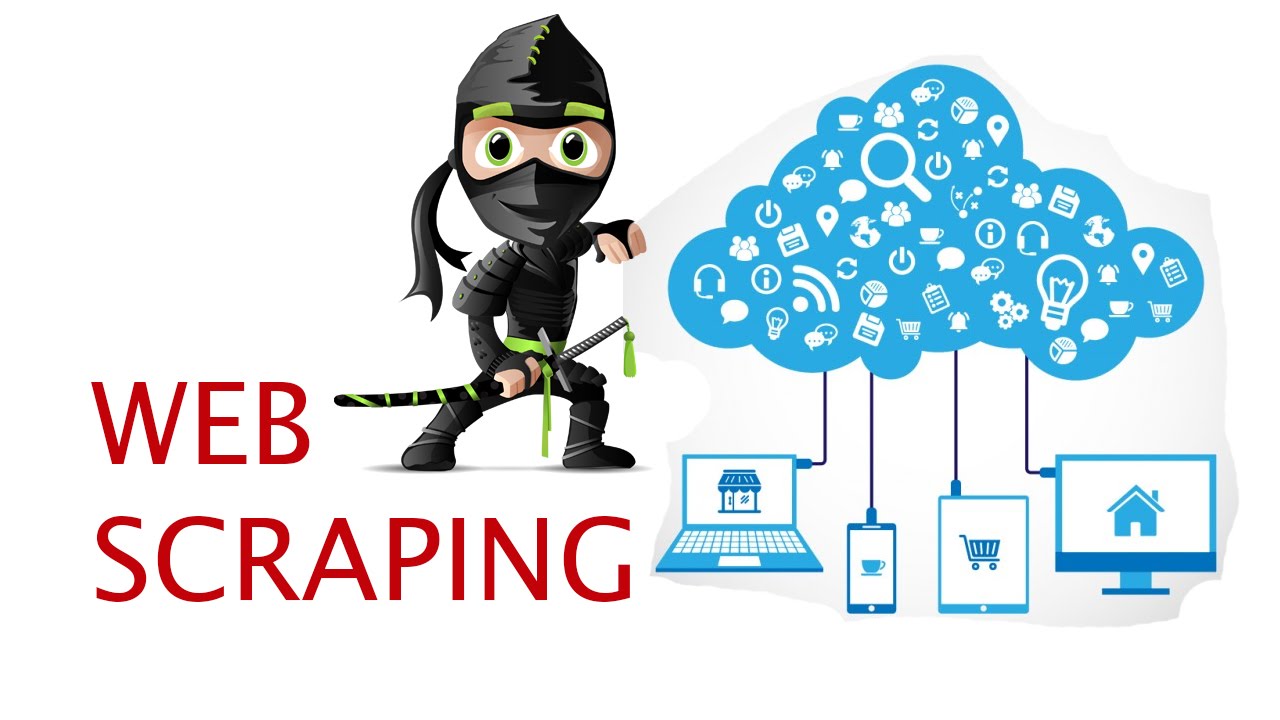Web scraping and automation are becoming increasingly popular with developers who want to gather data from websites quickly and efficiently. For those who are not familiar with web scraping & automation, it is a process in which you extract data from webpages using programming languages such as JavaScript. In this guide, we will explore the basics of web scraping & automation with JavaScript. We will cover topics such as how to set up a web scraper, what tools to use, and best practices for writing code that is optimized for speed and accuracy. Whether you’re a beginner just getting started or an experienced developer looking to refine your skills, this guide will help you on your journey towards mastering web scraping & automation with JavaScript.
What is Web Scraping?
Web scraping, also known as web harvesting or web data extraction, is the process of extracting data from websites. It can be done manually, but is typically automated using software that can simulate human web surfing. The extracted data can be stored in a database or spreadsheet for later analysis or used to generate reports.
There are many reasons why you might want to scrape data from a website. Perhaps you need to gather information about products or services for competitive analysis, or you may need to monitor prices on an e-commerce site. Maybe you want to collect data for a research project, or you might need to gather information about people or companies for marketing purposes. Whatever your reasons, web scraping can be a valuable tool.
When scraped data is used for commercial purposes, it is important to make sure that you have the right to do so. Check the terms of use for the website before scraping, and make sure that you understand how the data will be used. In some cases, it may be necessary to obtain permission from the website owner before scraping the data.
Why Scrape the Web?
The internet is full of data. From social media posts to online reviews, there is a wealth of information that can be accessed and analyzed. Web scraping is the process of extracting data from websites so that it can be used for further analysis.
There are many reasons why you would want to scrape the web. Maybe you want to track changes in prices on an eCommerce site, monitor mentions of your brand on social media, or collect data for a research project. Whatever the reason, web scraping can be a valuable tool for collecting data.
Web scraping can be done manually, but it is often more efficient to use an automated tool to do the job. JavaScript is a popular choice for web scraping because it can be used to create custom scrapers and automate the process.
If you’re considering scraping the web, this guide will show you everything you need to know about web scraping with JavaScript.
The Different Types of Web Scraping
There are a few different types of web scraping, each with its own advantages and disadvantages.
The first type is manual web scraping, which is the process of manually extracting data from websites. This type of web scraping can be time-consuming and tedious, but it’s also the most accurate way to get data.
The second type is automated web scraping, which is the process of using software to automatically extract data from websites. This type of web scraping is much faster than manual web scraping, but it can be less accurate.
The third type is semi-automated web scraping, which is a combination of the first two types. Semi-automated web scraping can be faster than manual web scraping and more accurate than automated web scraping.
How to Automate Web Scraping with JavaScript
Web scraping is a process of extracting data from websites. It can be done manually by copy and pasting data from a website into a spreadsheet, or it can be automated using a web scraping tool.
There are many different ways to automate web scraping with JavaScript. In this article, we will cover some of the most popular methods.
1. Using an online web scraper
There are a number of online web scrapers that you can use to automate web scraping. Some of the most popular include import.io and ScraperJS. These tools allow you to extract data from websites without having to write any code.
2. Using a browser extension
If you’re only looking to scrape data from a few websites, then using a browser extension may be the best option for you. There are a number of different extensions that you can use, including Data Miner and Web Scraper Plus. These extensions allows you to select the data that you want to scrape and then automatically extracts it for you. All you need to do is download the extension and then visit the website that you want to scrape.
3. Using a custom script or program
If you’re looking to scrape data from more than just a few websites, then you’ll likely need to write your own custom script or program. This approach requires more technical skills than the other two methods, but it’s also more flexible as you can customize the script to suit your specific needs.
Pros and Cons of Web Scraping
Web scraping can be a great way to automate tedious and time-consuming tasks, but it also has its drawbacks. Here are some pros and cons of web scraping to consider before you start scraping:
Pros:
1. Automates Tedious Tasks: Web scraping can automate tedious and time-consuming tasks, such as data entry or collecting data from multiple sources. This can save you a lot of time and effort, especially if you need to collect data regularly.
2. Saves Time and Money: By automating tasks that would otherwise be done manually, web scraping can save you a lot of time and money. In some cases, it can even be used to replace paid services.
3. Accesses Hard-to-Reach Data: Some data is simply not accessible through traditional means. Web scraping can help you get at this hard-to-reach data, giving you an edge over your competition.
Cons:
1. Can Be Illegal: In some cases, web scraping can be considered illegal. This is usually the case when you scrape copyrighted material or sensitive information without permission. Be sure to check the legalities of web scraping in your country before starting.
2. Requires Technical Skills: Web scraping requires at least basic technical skills, such as knowledge of HTML and CSS selectors . Without these skills, it will be difficult to scrape effectively. If you’re not comfortable with code, you may want to hire someone who
The Different Tools Used for Web Scraping
There are a number of different tools available for web scraping and automation with JavaScript. The most popular and well-known tool is probably the PhantomJS headless webkit. However, there are a number of other options available, including:
-HtmlUnit
-Zombie.js
-SlimerJS
-CasperJS
Each of these tools has its own advantages and disadvantages, so it’s important to choose the right one for your specific needs. PhantomJS is generally considered to be the most stable and reliable option, but it can be a bit slow. HtmlUnit is much faster, but can be less reliable. Zombie.js and SlimerJS are both fairly new options that have not yet been fully tested in production environments. CasperJS is an interesting alternative that provides a high level API for PhantomJS, making it easier to use for complex tasks.
Setting up Your Environment
Setting up your environment is the first step to being able to scrape data from websites. You will need to install a few things before you can start coding.
The main thing you will need is a code editor. This is where you will write your code. There are many different code editors available, so choose one that you are comfortable with. Some popular options are Visual Studio Code, Atom, and Sublime Text.
Once you have chosen a code editor, you will also need to install Node.js on your computer. Node.js is a JavaScript runtime that allows you to run JavaScript code outside of a web browser. This is what we will use to scrape websites. You can download Node.js from the official website (https://nodejs.org/en/).
Once you have installed Node.js, open your code editor and create a new file called index.js . We will be writing our scraping code in this file.
The last thing you will need to do is install the request and cheerio libraries for Node.js. These libraries make it easy to scrape websites by giving us tools to fetch web pages and parse their HTML content. To install these libraries, open a terminal window and type the following command:
npm install request cheerio –save
Basic Web Scraping with JavaScript
Web scraping is a process of extracting data from websites and converting it into a format that can be easily analyzed and processed. There are many ways to do this, but in this guide we’ll focus on the most basic method: using JavaScript.
This method involves using a web browser’s built-in developer tools to extract data from the website’s HTML code. While this might sound complicated, it’s actually quite easy once you get the hang of it. And best of all, you don’t need any special software or skills – just a web browser and a bit of patience!
So let’s get started. First, open up your web browser and navigate to the website you want to scrape data from. For this example, we’ll use www.example.com.
Once the website has loaded, press F12 to open up your browser’s developer tools. If you’re using Google Chrome, you’ll see the developer tools appear at the bottom of the window; if you’re using Mozilla Firefox, they’ll appear in a separate window at the right side of the screen.
Now click on the “Network” tab of the developer tools (this is where we’ll be able to see all of the requests that the website makes as it loads). Make sure that “Preserve log” is checked so that we can keep track of everything that happens as we load the page.
Now refresh the page (press F5 or click on the refresh icon in
Conclusion
Web scraping and automation are powerful tools for anyone looking to access data from the web and automate their workflows. With the right JavaScript knowledge, these tasks can be done quickly and efficiently. We hope that this full guide has given you all of the information necessary to start using web scraping and automation with JavaScript today. Whether you’re a novice or an experienced programmer, there is something here for everyone, so get out there and start coding!

